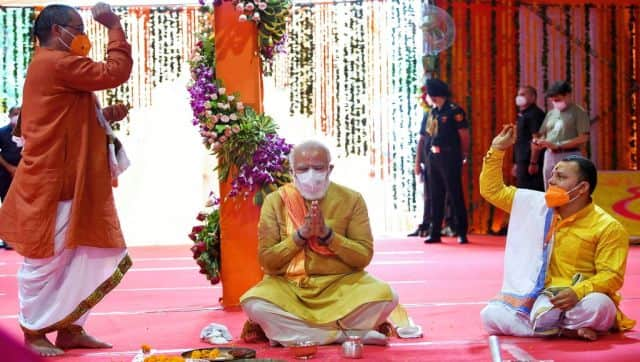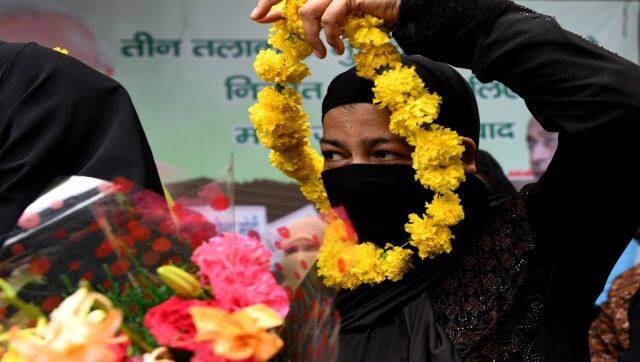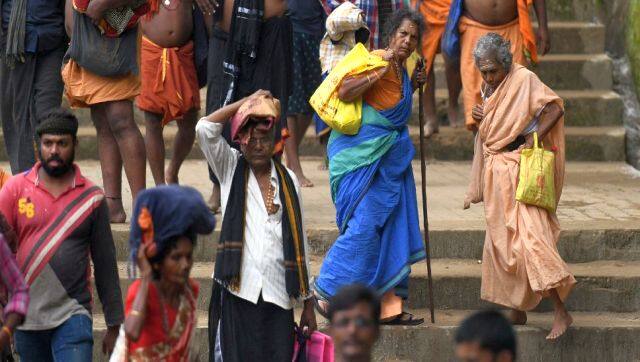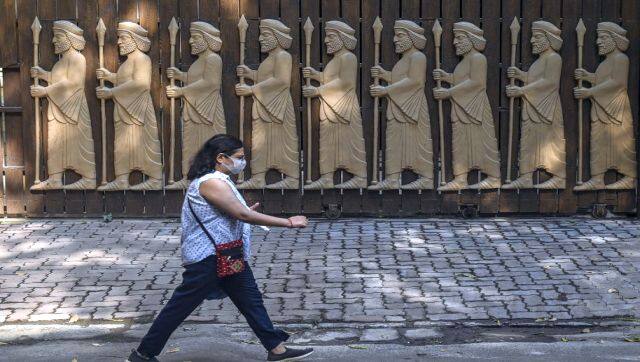After the Karnataka High Court (HC) dismissed petitions seeking permission to wear hijabs inside the classroom after it deemed that the headscarf was not an essential religious practice of Islam, the petitioners have filed a Special Leave Petition in the Supreme Court. The special leave petition has been field by a Muslim student named Niba Naaz through Advocate-on-Record Anas Tanwir, reported LiveLaw. The development came after a full bench of the Karnataka HC dismissed a batch of petitions filed by Muslims girls from pre-university colleges in Udupi region of the state seeking the right to wear hijabs or headscarves along with uniforms inside classrooms on Tuesday. “We are of the considered opinion that wearing of the hijab by Muslim women does not make up an essential religious practice in Islamic faith,” the full bench said in the gist of its order that was read out by the Karnataka chief justice Ritu Raj Awasthi Tuesday morning. Also read: Karnataka hijab row: Explaining how the controversy erupted and what’s next for student protesters This isn’t the first time that an issue of religion has reached the doorstep of the apex court. In fact, the judiciary in our country has time and again been asked to intervene in matters of religion. Ram Mandir One of the most significant and biggest judgments that the Supreme Court issued was that in connection to the Ram Mandir in Ayodhya. On 9 November 2019, the Supreme Court in a unanimous verdict cleared the way for the construction of a Ram Temple at the disputed site at Ayodhya, and directed the Centre to allot a five-acre plot to the Sunni WAQF Board for building a mosque. In its verdict, the Supreme Court said that a report by the Archaeological Survey of India (ASI) provided evidence that the remains of a building “that was not Islamic” was beneath the structure of the demolished Babri mosque. The court said that, given all the evidence presented, it had determined that the disputed land should be given to Hindus for a temple to Lord Ram, while Muslims would be given land elsewhere to construct a mosque. It then directed the federal government to set up a trust to manage and oversee the construction of the temple. However, the court added that the demolition of the Babri mosque was against the rule of law. Interestingly, this case was one of the longest-running battles in India’s legal history. The first case in the Ayodhya title dispute was filed 134 years ago. Over the decades, it wound its way up through the legal hierarchy, starting from Faizabad Civil Court to Lucknow Bench of the Allahabad High Court to the Supreme Court. [caption id=“attachment_10463661” align=“alignnone” width=“640”]  File image of Prime Minister Narendra Modi performing a religious ritual during the groundbreaking ceremony of the Ram Mandir in Ayodhya. AFP[/caption] Post the verdict, Prime Minister Narendra Modi laid the foundation stone for the temple in August 2020. Laying a 40 kilogram silver brick in a ceremony, Narendra Modi said, “A grand temple will now be built for our Ram Lalla who had been staying in a tent for decades. Today, Ram janmbhoomi breaks free of the cycle of breaking and getting built again - that had been going on for centuries.” “India is creating a golden chapter in Ayodhya. The wait of centuries ends today,” PM Modi said in his televised address at the event. Triple talaq In January 2020, the apex court declared that the centuries-old practice of instant triple talaq among the Muslim community was unconstitutional. The five-judge Constitution bench presided over by Chief Justice J S Khehar delivered a split verdict 3:2 in three separate judgments. The majority judges ruled that the divorce allowed for a Muslim man by pronouncing talaq (talaq-e-biddat) thrice violated the Constitutional provisions. [caption id=“attachment_10463671” align=“alignnone” width=“640”]  File image of a Muslim woman holding a garland of flowers to celebrate the passage of a law to outlaw Triple Talaq. AFP[/caption] Prime Minister Narendra Modi was quick to celebrate the vote as “a victory of gender justice”.
An archaic and medieval practice has finally been confined to the dustbin of history!
— Narendra Modi (@narendramodi) July 30, 2019
Parliament abolishes Triple Talaq and corrects a historical wrong done to Muslim women. This is a victory of gender justice and will further equality in society.
India rejoices today!
The judgment came after a batch of petitions filed by various parties challenged the constitutionality of triple talaq. The petitioners had claimed that triple talaq was unconstitutional. During the hearing, the court had observed that the practice was the “worst” and “not a desirable” form of dissolution of marriage among Muslims, even though some schools of thought called it “legal”. Several lawyers, including Ram Jethmalani, had attacked the practice on various constitutional grounds, including the right to equality, and termed it “abhorrent”. It was argued that triple talaq was a discrimination on the ground of gender and this practice was abhorrent to the tenets of the Quran and no amount of advocacy can save this “sinful” practice that is contrary to constitutional tenets. Entry to women at Sabarimala temple The apex court was once again caught in a religious debate when a group of five women lawyers moved the top court after the Kerala High Court had upheld the centuries-old restriction of not allowing women into the Sabarimala Temple, dedicated to Lord Ayyappa. Senior Advocate Indira Jaising, who represented the petitioners, said the restrictions went against Articles 14, 15 and 17 of the Constitution. She argued that the custom is discriminatory in nature and stigmatised women, and that women should be allowed to pray at the place of their choice. The temple board, however, contended that they were allowed to frame rules for the shrine without the state’s interference. They also said that it wasn’t discriminatory as the tradition was born from the belief that the deity is a ‘naishtika brahmachari’ (eternal celibate). After hearing both sides, a Constitution Bench led by then Chief Justice of India (CJI) Dipak Misra in a 4:1 verdict held that restrictions on the entry of women in religious places for physiological reasons lowered her dignity. [caption id=“attachment_10463701” align=“alignnone” width=“640”]  Elderly Hindu women trek to the Sabarimala temple in the southern state of Kerala. AFP[/caption] CJI Misra, justices RF Nariman, AM Khanwilkar and DY Chandrachud ruled against the restriction, declining to accept it as an essential practice of a denominated religious group and said it was a form of untouchability. On the other hand, Justice Indu Malhotra warned against judicial review of religious faith and belief and insisted on the need for balance between two rights – equality and the freedom to profess one’s religion. “Notions of rationality cannot be invoked in matters of religion by courts,” she said. However, the matter didn’t end there. In November 2018, the Supreme Court agreed to hear review petitions against its verdict and referred the review petitions to a larger bench. Parsi women’s exclusion from places of worship In 2017, the Supreme Court had granted a Zoroastrian woman barred from entering Parsi temples for marrying outside the community the right to enter a fire temple in Gujarat’s Valsad. The woman - Goolrukh Gupta - was excommunicated from Parsi religions activities after she married outside her religion. Following her excommunication, she was denied entry into a Parsi fire temple and wasn’t allowed to participate in other rituals. [caption id=“attachment_10463711” align=“alignnone” width=“640”]  A woman walks past walks past a fire temple in Mumbai. AFP[/caption] Under the Parsi customary law, she also lost the right to visit the ‘Tower of Silence’ in the event of her father’s death to perform the last rites. After being let down by the Gujarat High Court, she moved the apex court, which then ruled that she did not lose the right to enter Parsi temples or participate in other religious rituals because she married outside her community. With inputs from agencies Read all the Latest News , Trending News , Cricket News , Bollywood News , India News and Entertainment News here. Follow us on Facebook, Twitter and Instagram.


)

)
)
)
)
)
)
)
)



